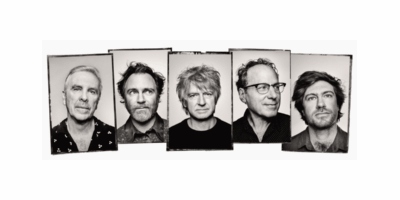Regardless of what you think about the vinyl resurgence, one thing is becoming increasingly difficult to argue, and that’s that vinyl lovers are becoming the only demographic that is still spending money on physical copies of music.
With CD and even digital sales plummeting each year, losing untold numbers of customers to the convenience and instant gratification of streaming, you’d think those still enamoured with actually owning their music would be the labels’ best friends right now.
But alas, it isn’t so. Despite a 52 percent jump in vinyl sales last year (remember, if you own a vinyl it’s because you bought it… or y’know, shoplifted it), major label executives still view vinyl as little more than a passing fad.
“It is a small percentage of our business. It’s not going to make or break our year,” RCA Records president Tom Corson tells the AV Club. “I know a lot of people in the business who’ve gotten back into vinyl the last couple years,” says Candace Berry, general manager of Universal Music Distribution.
[include_post id=”433840″]
“But I’m not sure they’re playing their vinyl every single day like they’re listening on their device,” she adds. Okay, so the big label honchos aren’t really in love with the hipster market, understandable. But indie labels must love the vinyl resurgence, right?
“It’s always going to be a niche….Not to be negative about it, but I feel like it’s going to peak, if it hasn’t already,” says Saddle Creek Records co-founder Robb Nansel, who also runs a vinyl-only record store.
Okay, so maybe vinyl is not long for this world, but those among us who actually care about sound quality will always prefer wax over digital, right? After all, anyone will tell you that if you want the ideal representation of an album, you have to get the vinyl.
Well, that may not necessarily be true. According to a fascinating new report by the LA Weekly, not only does vinyl fail to outperform CD in terms of quality, but in many cases it may even be an inferior format. In fact, the whole reason CDs were invented was to provide a better quality alternative to vinyl.
For example, one of vinyl’s inherent deficiencies is reproducing bass, another is that the last track on each side of a record sounds worse than the first, due to the fact that the player’s stylus covers fewer inches of grooves per second as it gets closer to the centre.
[include_post id=”433207″]
“But what about the loudness wars?” you ask. Yes, CDs were largely responsible for the increase in music’s general loudness and the resultant sacrifice in dynamic range. But it may surprise you to learn that the dynamic range of CDs is still far superior to that of analog formats. Vinyl simply has a limit on how loud you can make a recording.
If that’s not enough to clinch it for you, well, we hate to tell you this, but many of the modern vinyl records you’re buying are not only inferior to the CD, but inferior to previous generations of vinyl. The fact is, today’s records simply aren’t optimised for vinyl releases.
Just ask Pete Lyman, co-owner and chief mastering technician at Infrasonic Sound, an audio and vinyl mastering studio in LA. These days vinyl is often the last thing artists and labels think about, so while records are long enough for CD and digital formats, they’re too long for vinyl.
To get an album lasting over 40 minutes long to fit onto one LP, Lyman explains, high frequencies and bass are the first things that need to be sacrificed. There’s also extra distortion because the master lacquer must be cut at a lower volume to fit all that extra music onto the LP.


































